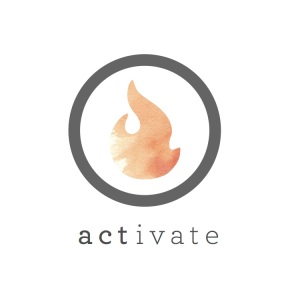This post is an excerpt from the book Courage Goes to Work by Bill Treasurer. This book is included in BKpedia, a new digital subscription service from Berrett-Koehler Publishers. Please visit bkpedia.bkconnection.com for graphics, tweets, and other resources.
Setting a Foundation for Courage
People won’t start being courageous just because you tell them to. You’ve got to create an environment that encourages them to extend themselves and take chances. There are four actions you need to take before expecting people to be more courageous. These four actions constitute the Courage Foundation Model, and they follow a specific order.
The first action deals with role modeling, or what I call Jumping First. Why on earth would you expect people to be courageous if you yourself are wimpy? Your own courageous actions will have the biggest impact on people’s willingness to be courageous.
The second action deals with creating safety. People won’t take chances unless they have at least some degree of support from you. Getting people to take big leaps requires putting some safety nets in place to soften their landing.
Action number three deals with putting fear to work. Few things are as potent as fear in causing people to be risk averse. But fear has energy. Properly harnessed, fear’s energy can be used to help people accomplish and overcome the very thing that may be inspiring their fear. The third action of the Courage Foundation Model is about harnessing fear.
The final action in the model deals with adjusting the degree of comfort and discomfort that workers experience. The idea is to slowly but persistently stretch workers’ capacity to deal with uncomfortable situations by assigning them incrementally greater challenges. Doing so causes them to exert more courage in order to meet the challenging assignments.
Courageously Fearful
As a former member of the U.S. High Diving Team, I learned firsthand the benefits of moving past my comfeartable tendencies. Every day for seven years I would climb to the top of a hundred-foot high-dive ladder (the equivalent of a ten-story building) and stand atop a one-foot-by-one-foot perch. Then, after a quick prayer, I would leap into the air like an eagle taking flight. Except eagles soar upward. I never did. I would always go down, careening at speeds of over fifty miles per hour into a pool that was only ten feet deep. Fifteen hundred high dives, all done with no parachute, no bungee, and no safety gear. Just me, a thin coat of sunscreen, and a Speedo.
The fact that I was a high diver doesn’t qualify me to write about courage. The fact that I was a high diver who is afraid of heights does. Becoming a high diver was a culmination of a series of things I did to engage with, learn from, and ultimately dominate my fear of heights. Many of the lessons I learned from this experience are chronicled in my first book, Right Risk: 10 Powerful Principles for Taking Giant Leaps with Your Life (Berrett-Koehler Publishers, 2003). The book’s front cover has a picture of me diving while on fi re. No kidding.
The experience and personal benefits I gained from dominating my fears taught me the supreme value of courage. While I am hardly the patron saint of courageous acts, I cherish courage above all other virtues. I have the Gaelic word for courage, misneach, prominently tattooed on my upper back . . . it helps remind me of my feisty Celtic heritage. Also, I am the only person in North Carolina to have a courage license. More specifically, my personalized North Carolina license plate is the word COURAGE (wave if you pass me!). Finally, three years ago, I forced a little courage on my family, moving us away from most of my clients in Atlanta, Georgia, and up to the Blue Ridge Mountains of Asheville, North Carolina. Why? So that we could all live more sanely . . . and pry ourselves loose from Atlanta’s traffic lunacy.
As someone who once found courage only in adrenaline-pumping and spine-tingling situations, I can now say unequivocally that courage is not limited to extreme feats of bravery. The most important lesson my clients have taught me is this: Courage is accessible to everyone. Not just the daredevils among us.
*****
Bill Treasurer is founder and chief encouragement officer at Giant Leap Consulting (www.giantleapconsulting.com), a courage-building company that helps people and organizations be more courageous. Among his clients are Accenture, CNN, EarthLink, SPANX, the Centers for Disease Control, the Drug Enforcement Administration, and the U.S. Department of Veterans Affairs. He is the author of Right Risk and the chief editor of Positively M.A.D. Prior to founding Giant Leap, Treasurer was the captain of the U.S. High Diving Team and performed over 1,500 dives from heights that scaled to over 100 feet (sometimes on fire!).

